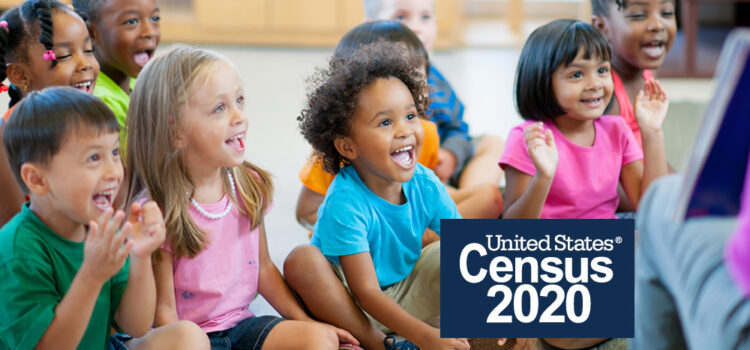
During the 2010 census, an estimated 1 million children under the age of 5 went uncounted.
In 2020, kids are again at risk of being overlooked, especially those in living situations with large extended families or multiple families under one roof, says Kevin Bartl, spokesperson for First 5 Kern, an organization that provides funds to programs that help children age 0 to 5.
“Young children – defined as children under age five – have been undercounted for decades, disadvantaging their families, communities, and neighborhoods. In the 2010 Census, the net undercount rate for young children was 4.6 percent, and more than 2.2 million in this age group were not included in the census results. This is a higher net undercount rate than for any other age group. Even among other children, those under five years old are more likely to be missing from census data.” – censuscounts.gov
“A lot of people don’t realize that the census isn’t really a family by family count, it’s a household by household count,” said Bartl. “So, even if you have two different families living in the same household, you have you count all of those people who are in the household not just the people in your family.”
Shared child custody, among other factors are also of concern, adds Bartl.
“‘I thought you were going to count them?,’ or ‘They live with me some of the time,’ and that type of thinking which extends to those kids who live with other family members. They think, well that’s not my child, so I shouldn’t have to report them. That is not true. You need to count them.”
The general rule for children in the census is: Count children in the home where they usually live and sleep most of the time, even if their parents do not live there. If you’ve just had a baby, and your baby was still in the hospital on April 1st, 2020, you should count your baby at the home where he or she will live and sleep most of the time.
“Some estimates have also put a number of the children who are not counted live in households that actually do participate in the census, which is very strange. In some case it comes down to that people just don’t realize you’re supposed to count your kids,” said Bartl.
Why is counting children so important to the census?
Let’s start with federally funded programs in education, health, and wellness that depend on an accurate count to serve their community.
“There are programs geared towards helping children and families whose funding is almost solely based on your census numbers,” said Bartl.
These programs include Head Start, school lunches, WIC, food stamps, and special education programs to name a few, all of which First 5 advocates for even as the COVID-19 pandemic continues to keep Bartl and his staff safely distanced from the public they serve.
“Talk about great plans that have not been able to be implemented, we have all kinds of boxes of kids collateral that arrived at our office the day before everybody went into quarantine that we haven’t even been able to get out. Census bookmarks, coloring books, activity worksheets, and we even have these really cool We Count census books for kids that talk about the importance of the census. It’s all geared towards children.”
BY THE NUMBERS
10 of the largest federally funded child-serving programs in 2015:
-Medicaid: $60.9 billion
-Supplemental Nutritional Assistance Program (SNAP): $29.2 billion
-Title I grants to LEAs (local education agencies): $13.9 billion
-National School Lunch Program: $11.6 billion
-Special Education Grants: $11.2 billion
-State Children’s Health Insurance Program: $11.1 billion
-Head Start: $8.3 billion
-Supplemental Nutrition Program for Women, Infants and Children: $6.3 billion
-Foster Care: $4.6 billion
-Child Care: $2.9 billion
**Courtesy of the Annie E. Casey Foundation
“These programs need to be supported, and if the programs aren’t being supported by the federal dollars, then our community has to find a way to come up with it,” said Bartl. “If those special education dollars don’t come into the school system, well then guess who has to figure it out? The school system does with our local dollars, so it’s super important to be counted.”
first5kern.org
Related Story: Single, working mother and student shares how the Census has provided her family opportunities
Kern Sol News is a youth-led journalism organization in Kern County. In their stories, reporters shine light on health and racial disparities in under-served communities across Kern. For more stories by South Kern Sol, head to southkernsol.org.